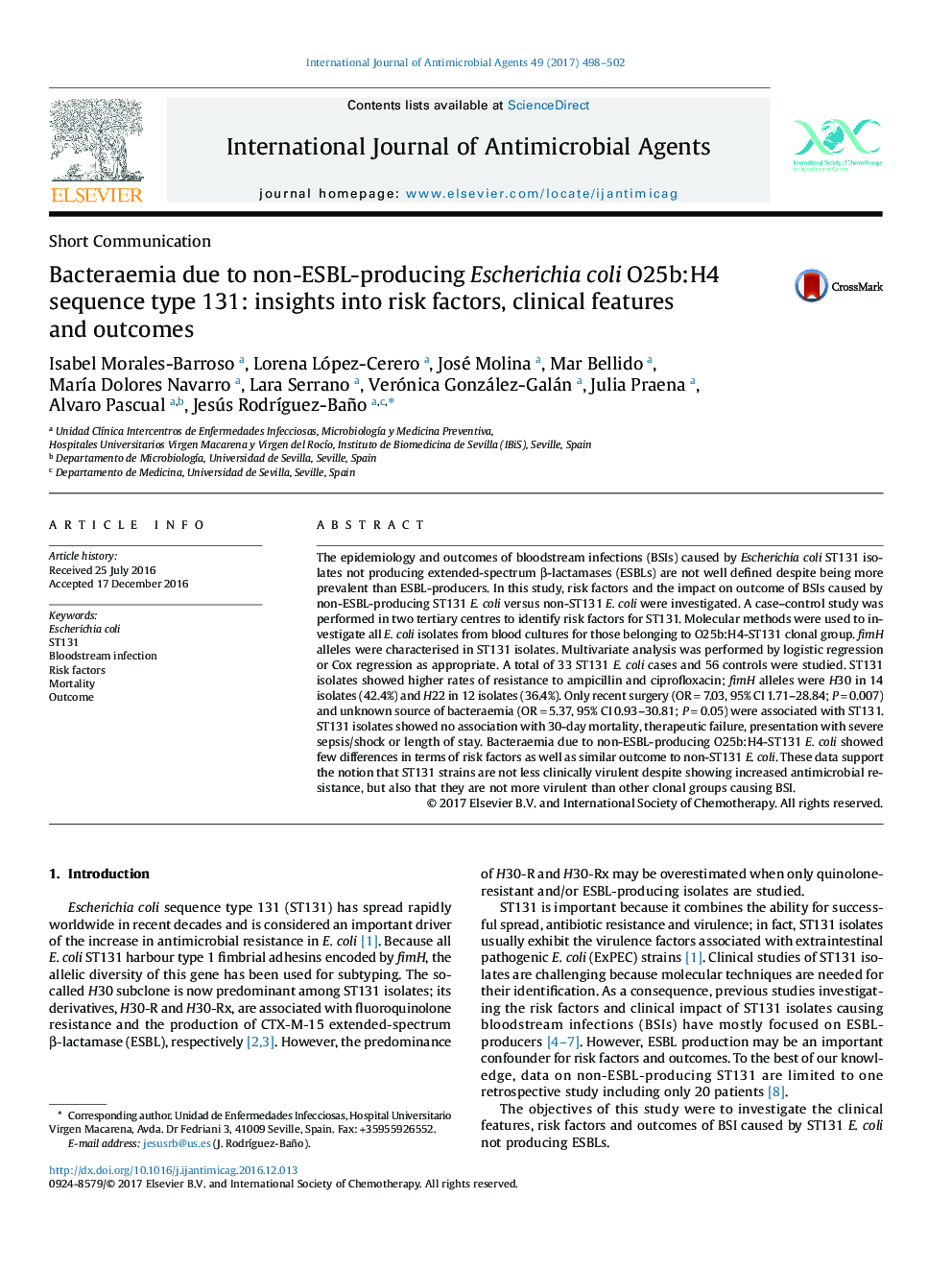| Article ID | Journal | Published Year | Pages | File Type |
|---|---|---|---|---|
| 5666836 | International Journal of Antimicrobial Agents | 2017 | 5 Pages |
â¢A case-control study on Escherichia coli ST131 bacteraemia was performed.â¢Resistance to ampicillin and ciprofloxacin was more frequent in ST131 isolates.â¢Previous surgery and unknown source of bacteraemia were associated with ST131.â¢Outcomes of ST131 and non-ST131 bacteraemia were not significantly different.â¢ST131, although more resistant, showed similar clinical behaviour to non-ST131 isolates.
The epidemiology and outcomes of bloodstream infections (BSIs) caused by Escherichia coli ST131 isolates not producing extended-spectrum β-lactamases (ESBLs) are not well defined despite being more prevalent than ESBL-producers. In this study, risk factors and the impact on outcome of BSIs caused by non-ESBL-producing ST131 E. coli versus non-ST131 E. coli were investigated. A case-control study was performed in two tertiary centres to identify risk factors for ST131. Molecular methods were used to investigate all E. coli isolates from blood cultures for those belonging to O25b:H4-ST131 clonal group. fimH alleles were characterised in ST131 isolates. Multivariate analysis was performed by logistic regression or Cox regression as appropriate. A total of 33 ST131 E. coli cases and 56 controls were studied. ST131 isolates showed higher rates of resistance to ampicillin and ciprofloxacin; fimH alleles were H30 in 14 isolates (42.4%) and H22 in 12 isolates (36.4%). Only recent surgery (ORâ=â7.03, 95% CI 1.71-28.84; Pâ=â0.007) and unknown source of bacteraemia (ORâ=â5.37, 95% CI 0.93-30.81; Pâ=â0.05) were associated with ST131. ST131 isolates showed no association with 30-day mortality, therapeutic failure, presentation with severe sepsis/shock or length of stay. Bacteraemia due to non-ESBL-producing O25b:H4-ST131 E. coli showed few differences in terms of risk factors as well as similar outcome to non-ST131 E. coli. These data support the notion that ST131 strains are not less clinically virulent despite showing increased antimicrobial resistance, but also that they are not more virulent than other clonal groups causing BSI.
